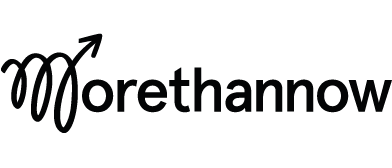The Inclusion Lab.
Unconscious bias training is not an effective way to reduce or mitigate long-term bias in your organisation:
From the HBR report, Why Diversity Programmes Fail?, drawing on three decades’ worth of data from over 800 U.S. firms
From The Behavioural Insights Team, reporting on the findings of a meta-analysis of 426 implicit bias studies by Forscher et al 2016:
From Caroline Waters OBE, summarising a evidence assessment of unconscious bias training from the Equality and Human Rights Commission
But many continue to invest heavily in the approach.
In 2015/2016, it was reported that $8 billion was invested in diversity and unconscious bias training in the US alone. While the scale of that resource is spread across a vast array of programmes managed in a vast number of ways, the evidence against multiple variations puts the burden of proof on training providers. In light of the weight of these independent conclusions, why do you think your approach will demonstrate impact? What specific outcomes have you identified and what are your measures of success?
The answers may well show potential, but they would be the exception rather than the rule.
We've been searching for a credible alternative.
For the last 18 months, we've pitched behavioural design as a route to a more inclusive workplace, inspired by the work of Professor Iris Bohnet at Harvard Kennedy School. Put simply, this means redesigning structure and environment to mitigate bias, rather than trying to redesign minds in training sessions.
While we've developed great relationships in the process, we've found that many corporate partners are overwhelmed by the level of intervention required. By example, we've recommended multiple ways to rethink the hiring process, from employer branding to job descriptions and CV screening to online assessments and final interviews. We understand that stretching that level of focus across your entire employee experience is not always feasible, and fails to meet other objectives and constraints:
The need to launch a publicly visible and engaging inclusion strategy.
The need to deliver from a central team, without the resource to run multiple initiatives at one time.
The need to involve employees from all corners of your business.
To offer a credible alternative, we need to connect ‘what works’ to these broader objectives. We must remain research-led and experimental, engage employees with autonomy, empowerment and a sense of belonging, and share their stories far and wide...
Our answer is The Inclusion Lab.
The Inclusion Lab is inspired by Professor Sarah Kaplan's call for inequality to be re-framed as an innovation challenge. We want to tap into the energy laying dormant in your organisation, lighting many small fires and helping them grow. This is how we see it play out:
1. Select a challenge and create a Lab Group
We work together to identify a series of specific challenges within the field of workplace bias and inclusion. For each, we identify a 'Lab Group', consisting of 15-20 employees committed to making a difference to their local community. Their story will be told across the organisation in real-time...
2. Kick things off with a one-day session.
LEARN
Our 'training alternative' forms part of the discovery phase rather than a way to address bias. Each group spends a morning learning how and why bias shows up in our selected context, as we draw connections between external research and organisational data. But we also make it clear that this new-found knowledge is unlikely to make a difference by itself.
APPLY
The group splits into four teams in the afternoon to develop an intervention based on behavioural design. Whether the challenge is inclusive job descriptions, fairer promotions, or a shake up of informal networks or flexible working, each team will design a potential solution with the support of a behavioural scientist and facilitator.
3. Support the teams to find their own answers.
TEST
As part of their selection into this programme, each team will have been asked to test their intervention in their area of the business. As the day concludes, they will set and publicise realistic objectives for three to six months ahead.
The level of support offered over that time will differ based on your ambitions, but each should receive a mentor with expertise in behavioural science and experimental design. In some circumstances, teams may even be able to work with an academic with an aligned research interest.
SCALE
At the end of the three to six month period, each team will present back to their Lab Group and discuss their findings. The best interventions may be presented for company-wide roll out, but all will have made a contribution which can be celebrated. The results can be collated into an open and co-created research paper.
So what's next?
We believe The Inclusion Lab warrants exploration and that's why we've made our framework open source for everyone. But if you’d like to work with us to rethink your approach to bias, please get in touch below:
Thanks - This approach has been developed over many conversations, not just internally but with friends of MoreThanNow and attendees of our workshop series. Thank you to all. A special mention again to Professor Sarah Kaplan, who inspired us with her TEDTalk on 're-framing gender equality as an innovation challenge'.






